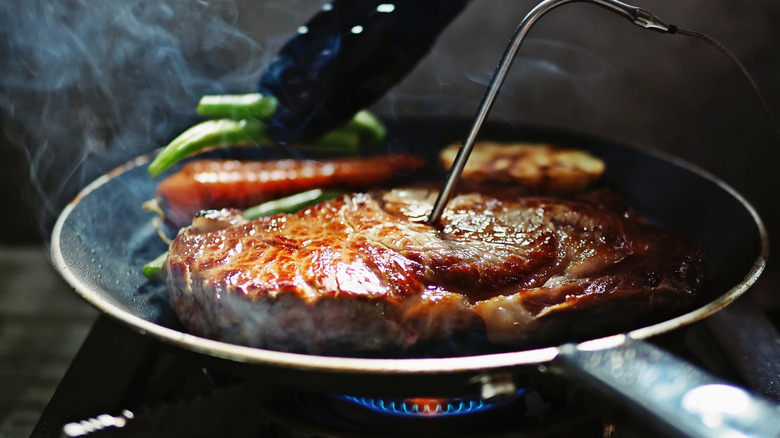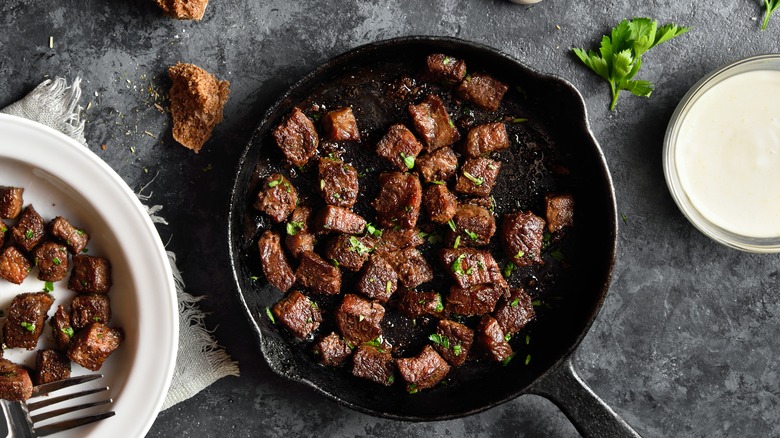The Nonstick Pan Mistake That's Hindering Your Food's Flavorful Potential
Most home cooks know that the Maillard reaction, or the caramelization process that occurs when food cooks and browns, is an oh-so-important part of the cooking process that brings out the full flavor of many foods. But what about "fond?" Fond is an important part of the cooking process that you'll want to ensure you achieve so that your food reaches its full flavor potential.
Fond is very similar to the Maillard reaction: "Fond" refers to the browned, cooked pieces of food that are leftover after you cook something. Think of the little nuggets of steak that are leftover in your cast iron after you cook a New York Strip Steak or the little bits and bobs that you find in the bottom of your roasting dish after you roast a chicken.
While these little pieces of food can be easy to overlook, they can also make for amazing flavor, whether you serve them alongside your dish or you use them to make something else, like a pan sauce or gravy. However, no matter what you're cooking, it's going to be difficult to create fond if you use a non-stick pan.
Why nonstick pans reduce fond
Fond is created when a small portion of food cooks over a very high heat and caramelizes, creating an amazing flavor that's difficult to replicate otherwise. Since fond is essentially seared food, though, the food has to actually stick to a cooking surface until it's done in order for fond to form, and sticking simply doesn't happen when you use a nonstick pan.
As James Beard award winner Chef Paul Kahan told Well & Good, non-stick pans are best left to your egg dishes. Anything that needs fond requires a cooking surface that allows for a little sticking. Go for cast iron or stainless steel, and then, once your fond is formed, deglaze the pan to make full use of it (and make sure to deglaze the pan before the fond burns). Properly cooked fond will make all the difference in some of your favorite pan sauces and gravies, but it is just tasty on its own, too.

